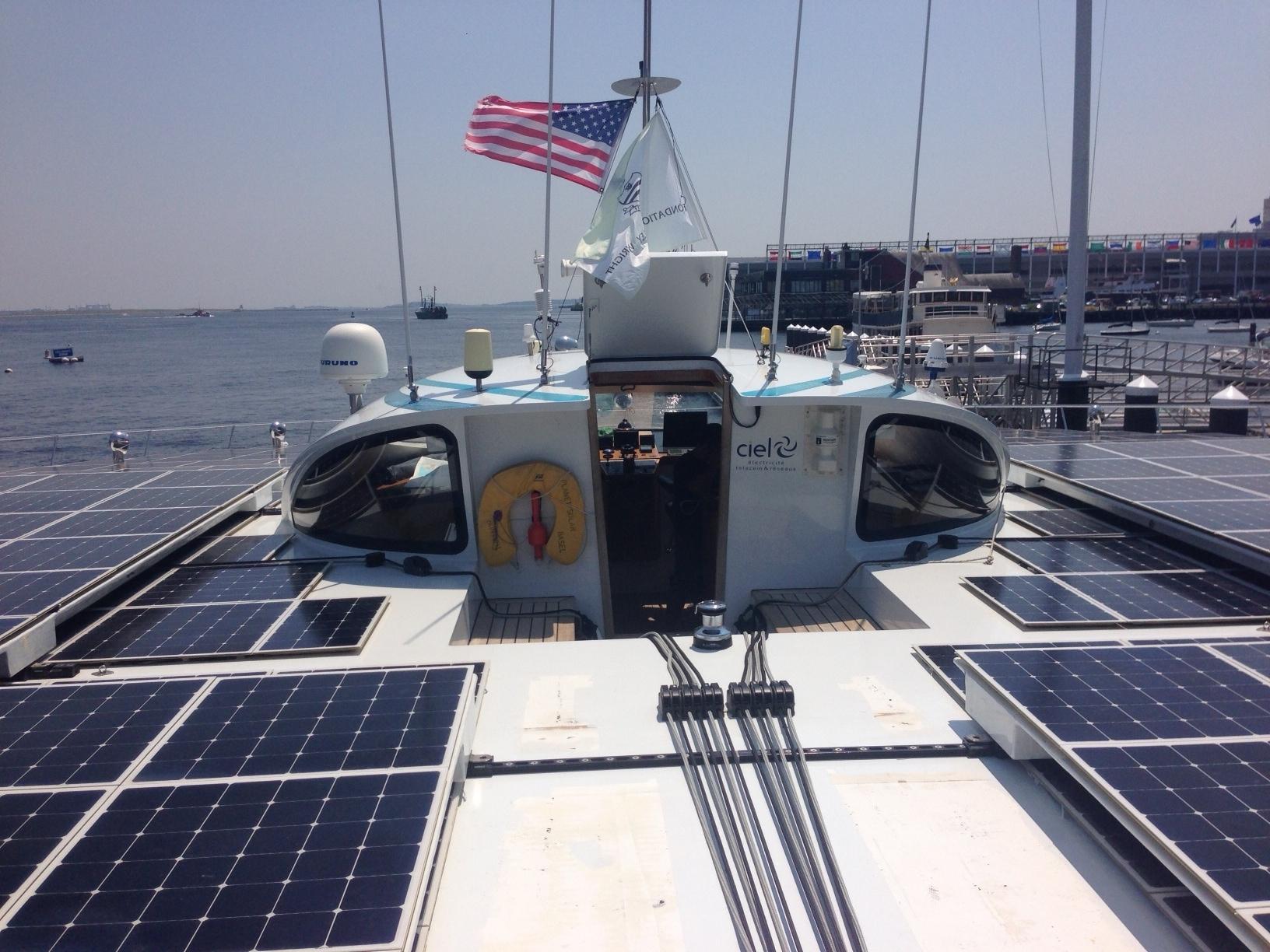Solar powered ocean-going boat makes pitstop in Boston
The MS Tûranor PlanetSolar has spent more than a year sailing around the world, powered by nothing but the sun. Now the ship is docked in Boston for a few days, as it continues a scientific journey along the Gulf Stream. (Photo by Maria Spiridigliozzi.)
From a distance you could mistake it for a party cruise boat.
But unlike a booze cruiser, the MS Tûranor’s top deck doesn’t have a dance floor — instead it’s covered in massive black panels.
The Tûranor is the world’s largest solar powered vessel.
The catamaran was built in 2010 to demonstrate the power of renewable energy. The name Tûranor comes from J.R.R. Tolkien’s Lord of The Rings — meaning “power of the sun.”
“It’s difficult with a solar boat,” said MS Tûranor Captained Gerard D’Aboville. “The more north you go the more difficult it is.”
D’Aboville says the boat has 10 tonnes of batteries. It can sail at night and on cloudy days with a power reserve of 72 hours.
“Here in summer it’s perfect,” D’Aboville said. “You can see the sun we have now and our batteries are fully charged.”
In May 2012, the Tûranor became the first solar electric vehicle to circumnavigate the globe.
During the expedition, it broke two records: The fastest crossing of the Atlantic Ocean by solar boat and the longest distance ever covered by a solar electric vehicle.
Now the MS Tûranor is a floating science lab. Climate scientists from the University of Geneva are aboard the MS Tûranor to measure the effects of global warming on the ocean — specifically following the gulf stream.
The scientists are using the $15 million vessel to investigat how phytoplankton, microscopic plant organisms, are affected by global warming.
“Here we are in a field of solar panels,” D’Aboville says as he shows off his boat. “You don’t see them all because on both sides there are some solar panels that are sliding and when we are at sea we open it and double the surface. We are in the middle of 512 square meters of solar panels.”
From Boston the MS Tûranor will continue on its journey to follow the gulf stream. The boat is carbon neutral so the scientists are hoping to collect data that isn’t distorted by pollutant gases that come from a regular boat.
Captain D’Aboville will chart a course that will take the vessel on the sunniest route. He says being on the open sea on the Tûranor is easier than mooring a boat shaped like a small aircraft carrier.
“It’s a bit difficult to maneuver — not here because we had plenty of room, but when we went in New York, in a tiny little harbor like a mouse hole. It was a bit difficult to enter or to escape,” he said.
Solar powered boats aren’t going to replace gas-powered boats any time soon, D’aboville says. But, he suggests the Tûranor is more of an ambassador to show what solar power can do.
